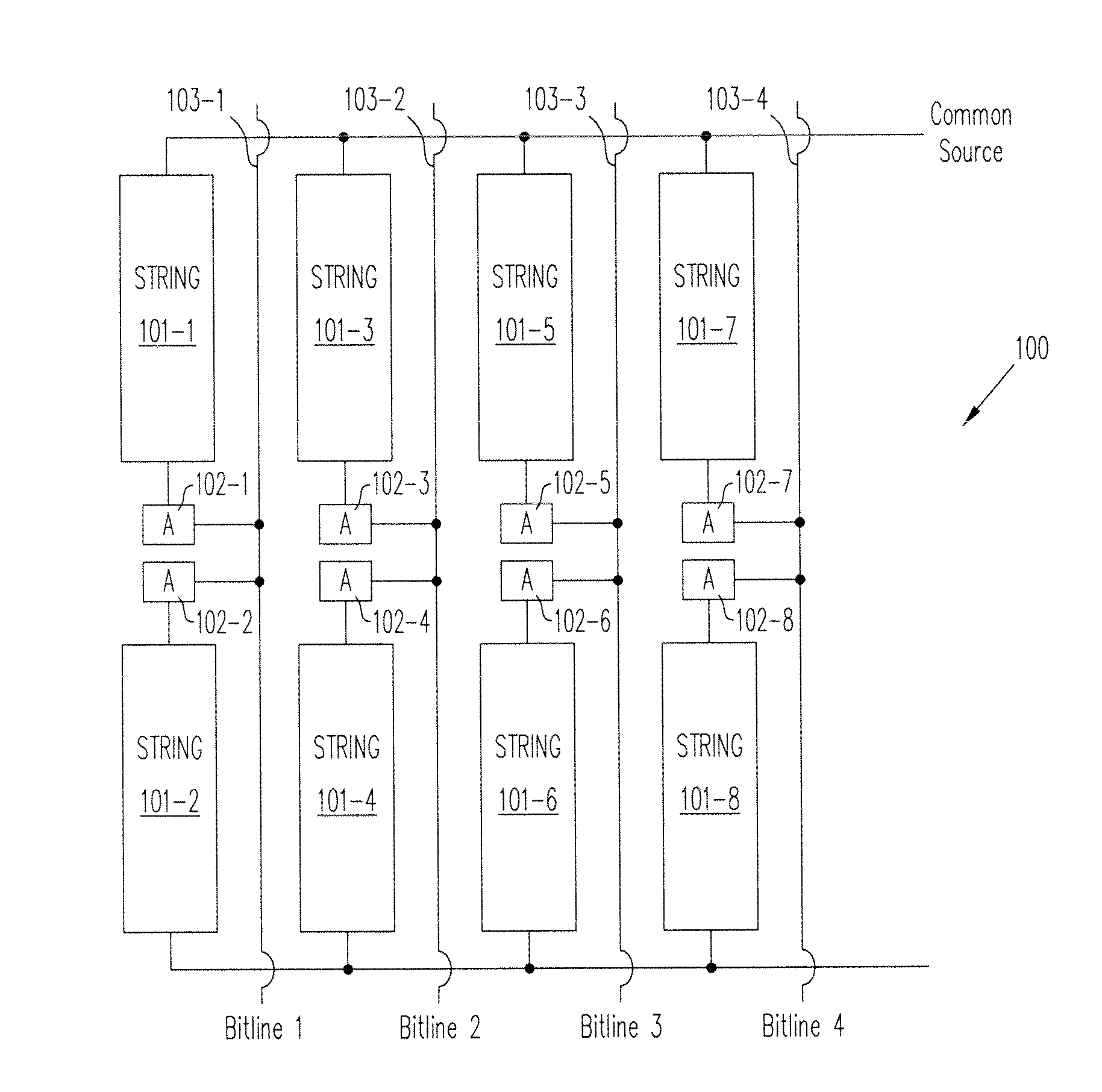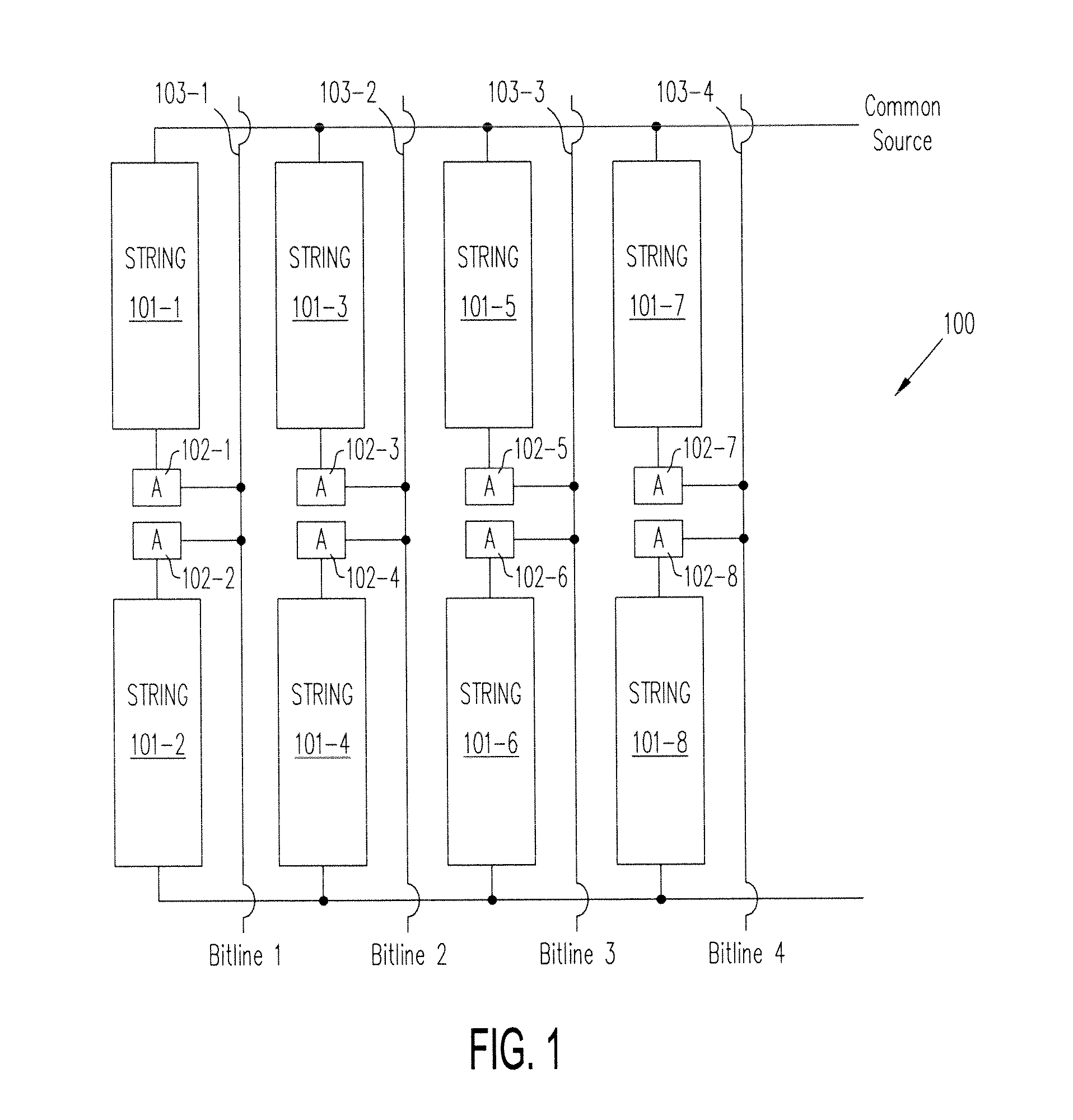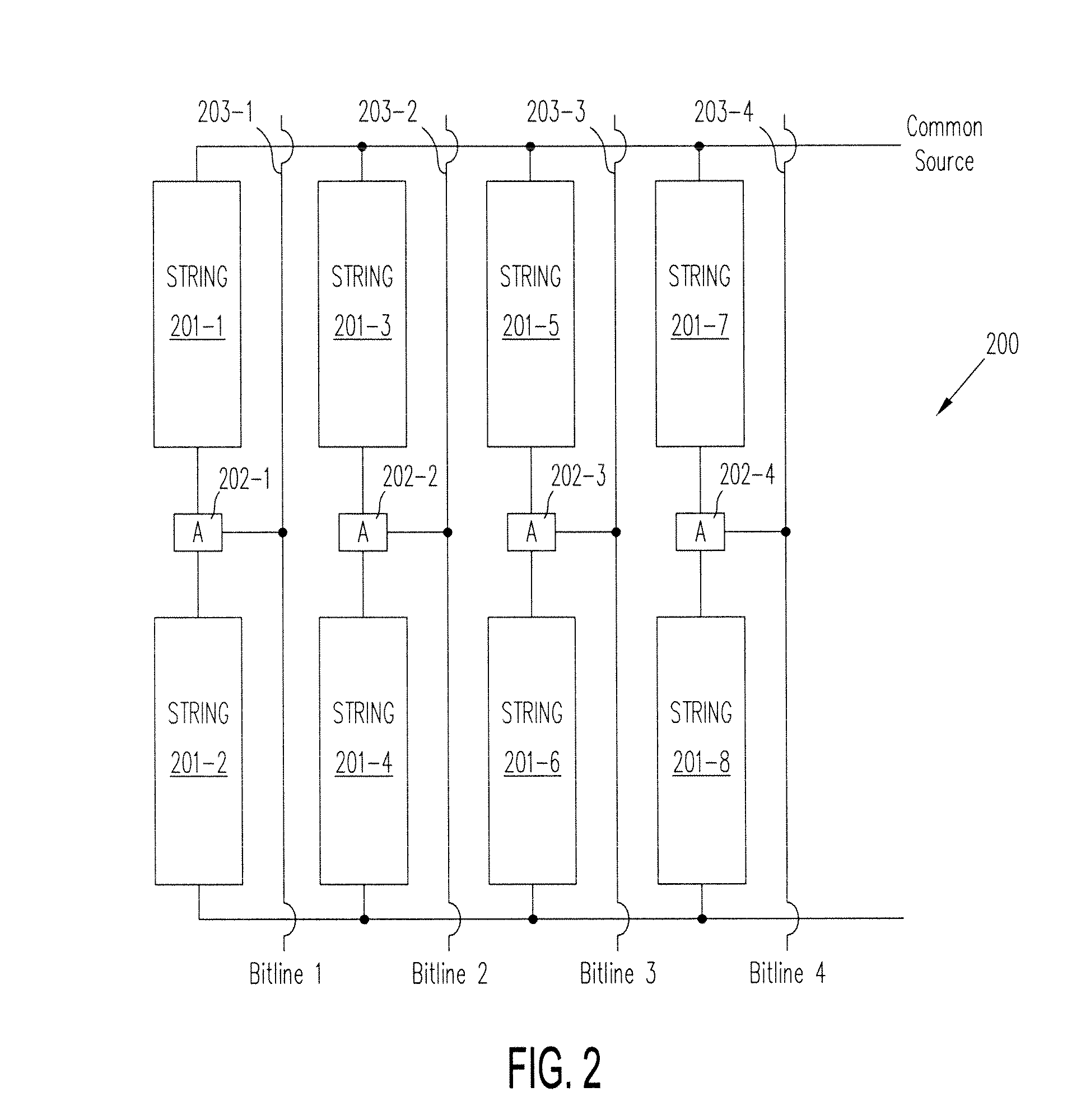Non-volatile memory devices with thin-film and mono-crystalline silicon transistors
a technology of monocrystalline silicon and transistors, applied in semiconductor devices, instruments, electrical appliances, etc., can solve the problem of large “read latency” and achieve the effect of efficient drive bit lines and fast sensing of stored data
- Summary
- Abstract
- Description
- Claims
- Application Information
AI Technical Summary
Benefits of technology
Problems solved by technology
Method used
Image
Examples
Embodiment Construction
[0023]FIG. 1 is a block diagram illustrating non-volatile memory array 100 provided according to one embodiment of the present invention. The non-volatile memory array may include dual-gate thin-film devices or transistors as non-volatile storage devices. Each dual-gate device may include a floating gate as one of the gate elements in the dual-gate device. In some embodiments, floating gates may be used as both of the gate elements in the dual-gate device. The floating gate may be implemented by a small-dimension thin film conductor (e.g., less than 20 nanometers thick or on each side). The thin-film conductor may be formed out of any suitable material, such as titanium nitride (TiN), tantalum nitride (TaN), doped polysilicon, or any combination thereof. Alternatively, the floating gate may be provided in a dielectric layer embedded with conductor nanodots, also known as nanocrystals.
[0024]As shown in FIG. 1, thin-film transistor-based nonvolatile memory strings 101-1 to 101-8 are r...
PUM
 Login to View More
Login to View More Abstract
Description
Claims
Application Information
 Login to View More
Login to View More - R&D
- Intellectual Property
- Life Sciences
- Materials
- Tech Scout
- Unparalleled Data Quality
- Higher Quality Content
- 60% Fewer Hallucinations
Browse by: Latest US Patents, China's latest patents, Technical Efficacy Thesaurus, Application Domain, Technology Topic, Popular Technical Reports.
© 2025 PatSnap. All rights reserved.Legal|Privacy policy|Modern Slavery Act Transparency Statement|Sitemap|About US| Contact US: help@patsnap.com



